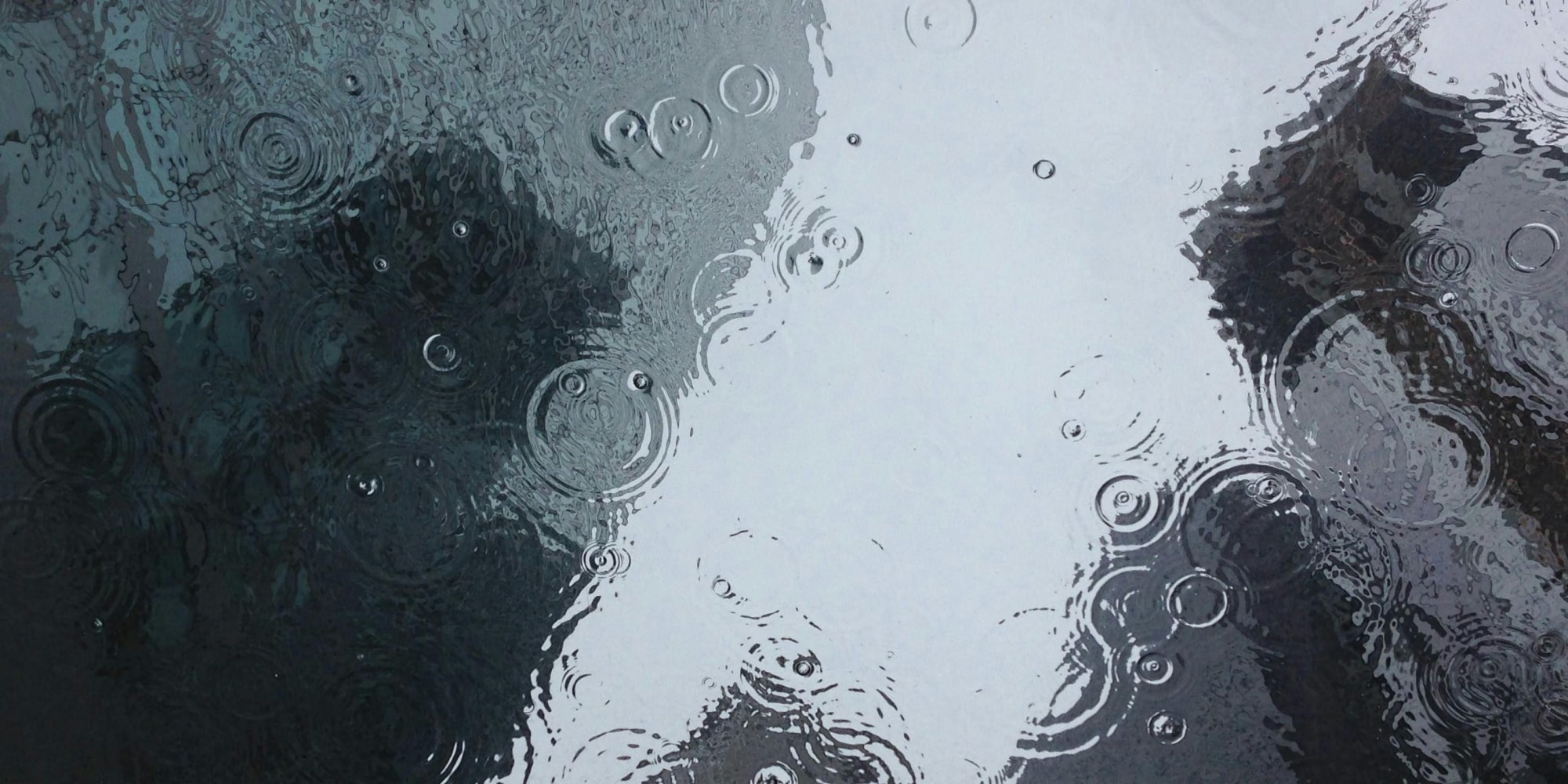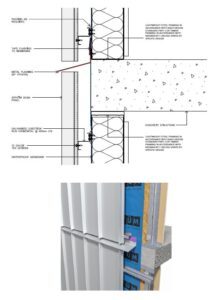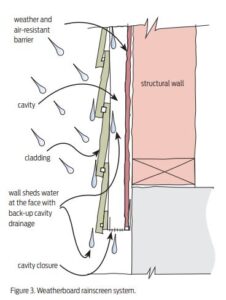
What is a rainscreen cladding?
A Rainscreen cladding is a type of exterior wall construction that is designed to manage moisture and improve the thermal performance of a building. It consists of an outer weather-resistant cladding layer and an inner layer that provides thermal insulation and serves as a secondary barrier against moisture penetration. The gap between these layers, known as the cavity, allows for ventilation and drainage.

Here are five benefits of a rainscreen cladding:
- Moisture Management:
The primary purpose of rainscreen cladding is to manage moisture effectively. The cavity between the outer cladding and the exterior wall allows any water that penetrates the outer layer to drain away, preventing it from reaching the building’s structural components. This helps in reducing the risk of water damage, mold growth, and other moisture-related issues. - Improved Thermal Performance:
Rainscreen systems often include insulation materials within the wall assembly. This insulation helps in enhancing the building’s thermal performance by reducing heat transfer through the walls. As a result, buildings with rainscreen cladding are generally more energy-efficient and have better insulation. - Ventilation and Air Circulation:
The gap between the rainscreen cladding and the outer wall of the building (figure 3), promotes natural ventilation and air circulation. This helps in preventing the buildup of moisture within the wall assembly, contributing to a healthier indoor environment and reducing the risk of decay or deterioration of building materials. - Enhanced Aesthetics:
Rainscreen cladding systems offer a wide range of design options and material choices, allowing architects and builders to achieve the desired aesthetic appearance for the building. This flexibility in design can improve the overall visual appeal of the structure. - Longer Lifespan for Building Materials:
By effectively managing moisture and reducing exposure to the elements, a rainscreen cladding can contribute to the longevity and durability of the building. This can result in lower maintenance costs over time and a longer lifespan for the entire building envelope.
Overall, the rainscreen cladding system is a beneficial architectural solution that not only protects the building from moisture but also contributes to energy efficiency, aesthetics, and the longevity of the building.

You may ask, is aluminium a good rainscreen cladding for your project?
Below are several reasons why aluminium is commonly used in rainscreen systems:
- Corrosion Resistance:
Aluminium is naturally corrosion-resistant, which makes it well-suited for exterior applications where it is exposed to varying weather conditions. This resistance to corrosion helps ensure the longevity and durability of the cladding system. - Lightweight:
Aluminium is a lightweight material, making it easier to handle and install. The reduced weight also places less stress on the building structure, which can be advantageous in both new construction and renovation projects. - Versatility:
Aluminium is a highly malleable and ductile material, allowing it to be fabricated into various shapes and forms. This versatility allows architects and designers to achieve a wide range of aesthetic possibilities with rainscreen cladding. - Low Maintenance:
Aluminium requires minimal maintenance compared to some other materials. It does not rust, and its resistance to corrosion means it can withstand exposure to the elements without deteriorating quickly. This low maintenance characteristic is beneficial for building owners over the long term. - Recyclability:
Aluminium is highly recyclable, making it an environmentally friendly choice. The recyclability of aluminium contributes to sustainable building practices and aligns with modern efforts to reduce the environmental impact of construction materials. - Color Options:
Aluminium can be finished with a variety of coatings and finishes, offering numerous color options. This allows for customization to meet the design requirements of the building.
While aluminium offers many advantages, it’s essential to consider factors such as the local climate, building design, and budget when choosing a rainscreen cladding material. Additionally, proper installation and detailing are crucial to the effectiveness of any rainscreen system, regardless of the material used.
View our rainscreen claddingsOrder Free Samples
Experience and experiment with any of our products first hand in the profile, colour and finish of your choice.
Technical Documentation
View and download product manuals, CAD files, safety data sheets, warranty details, maintenance information and more.